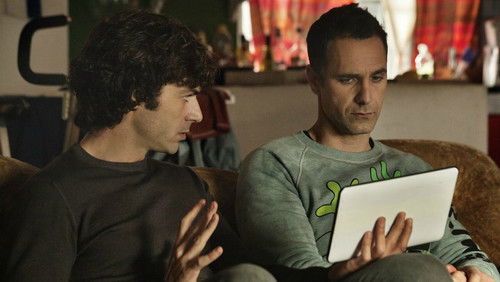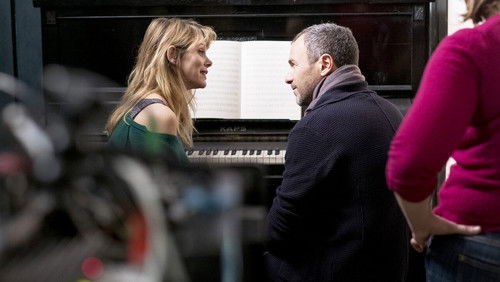Four Sheets to the Wind (2007)
58KFour Sheets to the Wind: Directed by Sterlin Harjo. With Wes Allen, Jeri Arredondo, Laura Bailey, Nando Betancur. After his father’s untimely suicide, Cufe leaves his home in a Native American reservation in search of a more fulfilling life.
“One of the great joys of browsing movies is coming across titles one has never heard of, just because of one person in the cast. Such discoveries can lead to great surprises, and u0026#39;Four Sheets to the Windu0026#39; is certainly one of them. This is low-key and reserved, but so very well made – and beautiful, and outright sensational.u003cbr/u003eu003cbr/u003eAlmost everyone in the cast has a considerable number of credits to their name, though as I havenu0026#39;t seen most of their films, I canu0026#39;t say Iu0026#39;m familiar with them. Yet that makes it all the more noteworthy that the assembled cast is outstanding. Cody Lightning, as protagonist Cufe Smallhill, and Jeri Arredondo and Tamara Podemski, as his mother Cora and sister Miri, all have seemingly natural acting skills that make inhabiting their roles feel effortless. Itu0026#39;s a true joy to watch them at play, conveying every little nuance of their characters, and in scenes together they readily realize the difficult relationships between family. I right away want to see more of all their pictures.u003cbr/u003eu003cbr/u003eMore immediately recognizable are Christian Kane, in an unexpected small role as Miriu0026#39;s somewhat churlish boyfriend – and voice actor extraordinaire Laura Bailey, in a prominent supporting part as Miriu0026#39;s neighbor Francie. Baileyu0026#39;s seemingly endless credits and awards in voice work speak for themselves, but in a live-action film she carries such profound grace and poise that she lights up the screen as soon as she appears. She easily matches Lightning, Arredondo, and Podemski in capturing our attention – and one wishes Bailey would take on more film roles.u003cbr/u003eu003cbr/u003eThese are a lot of words that focus on the actors, but this is the essence of u0026#39;Four Sheets to the Windu0026#39;: There is narrative to set the players in motion, but the greatest substance here is in the characters, their emotions, and their interactions with one another. The most loud the movie gets is in the soundtrack that, while fine and enjoyable, tends to be high in the sound mix. Otherwise this is pointedly subdued, reliant on subtle moments, expressions, and softly shifting character development. And in that peacefulness – rife with a measure of simmering tension, like a pot of water ever threatening to boil over – this is absolutely lovely.u003cbr/u003eu003cbr/u003eThis was only the first full-length feature film of writer-director Sterlin Harjo, but he made something utterly fantastic. While broaching topics of poverty and depression, he purposefully avoids stereotypes that define indigenous characters in so many other pictures. The characters feel very real and part of our world even as the narrative is remarkably, deliberately, brilliantly understated. Any comparison I could make falls by the wayside as attention is so singularly focused on the marvel before me.u003cbr/u003eu003cbr/u003eAnd itu0026#39;s all tied together by a stellar cast that exceeds any expectations I may have possibly had.u003cbr/u003eu003cbr/u003eTo stumble across this basically by happenstance has been an utmost pleasure. Itu0026#39;s an exquisite, captivating, charming, discreetly emotional movie. I donu0026#39;t know what more to say without repeating myself, except for that I wish only that it were longer. u0026#39;Four Sheets to the Windu0026#39; is phenomenal, highly recommended for all viewers.”









